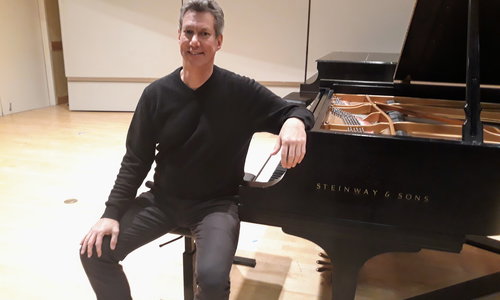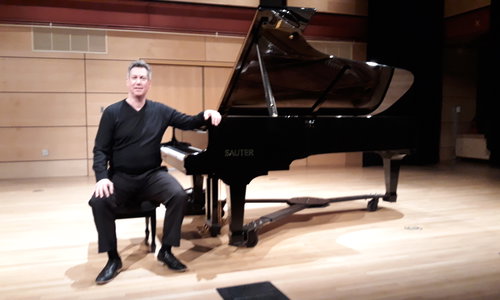Eclectic batch of Classical Piano Music
Details
Mark Valenti - pianist full profile / piano / 1 musician
Full program notes
Debussy - Reverie, Arabesque #1
Beethoven - Sonata #30 in E op. 109
Chopin - 2 Nocturnes
Prokofiev - 8th Sonata III
Historical context
In keep with the tradition of his youth, Claude Debussy endowed us with two more lovely expamples of French Romaticism before embarking on a radical shift in style. Reverie, a simple but no less beautiful work, is unabashedly romantic. In Arabesque, frilly patterns weave the texture of the melody and acompaniment reflecting the style of Arabian Art.
Sonata no. 30 by Ludwig van Beethoven abandons the conventional fast-slow-fast arrangement of movements. The sonata does begin with a lively toccata-like subject but it is quickly and abruptly interrupted by a highly improvisatory second theme in adagio tempo. The central movement is cast as a prestissimo scherzo. Resolute and defiant, it shatters the contemplative mood of the first. One of Beethoven's most intimate melodies can be heard in the theme of the third movement in variation form. Maximum contrast between successive variations is achieved with the final one culminating in extended trills out of which the original theme emerges all the more enhanced.
Greatly influenced by John Field and Italian opera, Frédéric Chopin’s Nocturnes are amongst the most romantic music ever written. The B flat minor, a classic example of a nocturne, has an improvisational feel while the B major embodies a slightly waltzy rhythm with yearning, but more optimistic melodic content, as well as an impassioned interlude.
Nicknamed one of the ‘war sonatas’, Sergei Prokofiev’s Sonata #8 is a fine example of his blend of Classical simplicity with Modernistic disquietude. The final Vivace is a bedazzling spectacle with a zany danse moderne interlude.
-MV
Videos from this ensemble
Other programs from this ensemble
Eclectic batch of Classical Piano Music
- Musician profile: Mark Valenti
-
Instruments: piano
- Musician profile: Mark Valenti - pianist
- Composers: Beethoven, Bartok, ViIla-Lobos, Chopin
-
Instruments: solo piano
- Musician profile: View player profile
- Composers: Debussy, Haydn, Chopin
-
Instruments: solo piano
- Musician profile: View player profile
- Composers: Debussy, rachmaninoff, Barber
-
Instruments: Piano

 Continue with Facebook
Continue with Facebook
 Continue with Google
Continue with Google
 Continue with Apple
Continue with Apple


